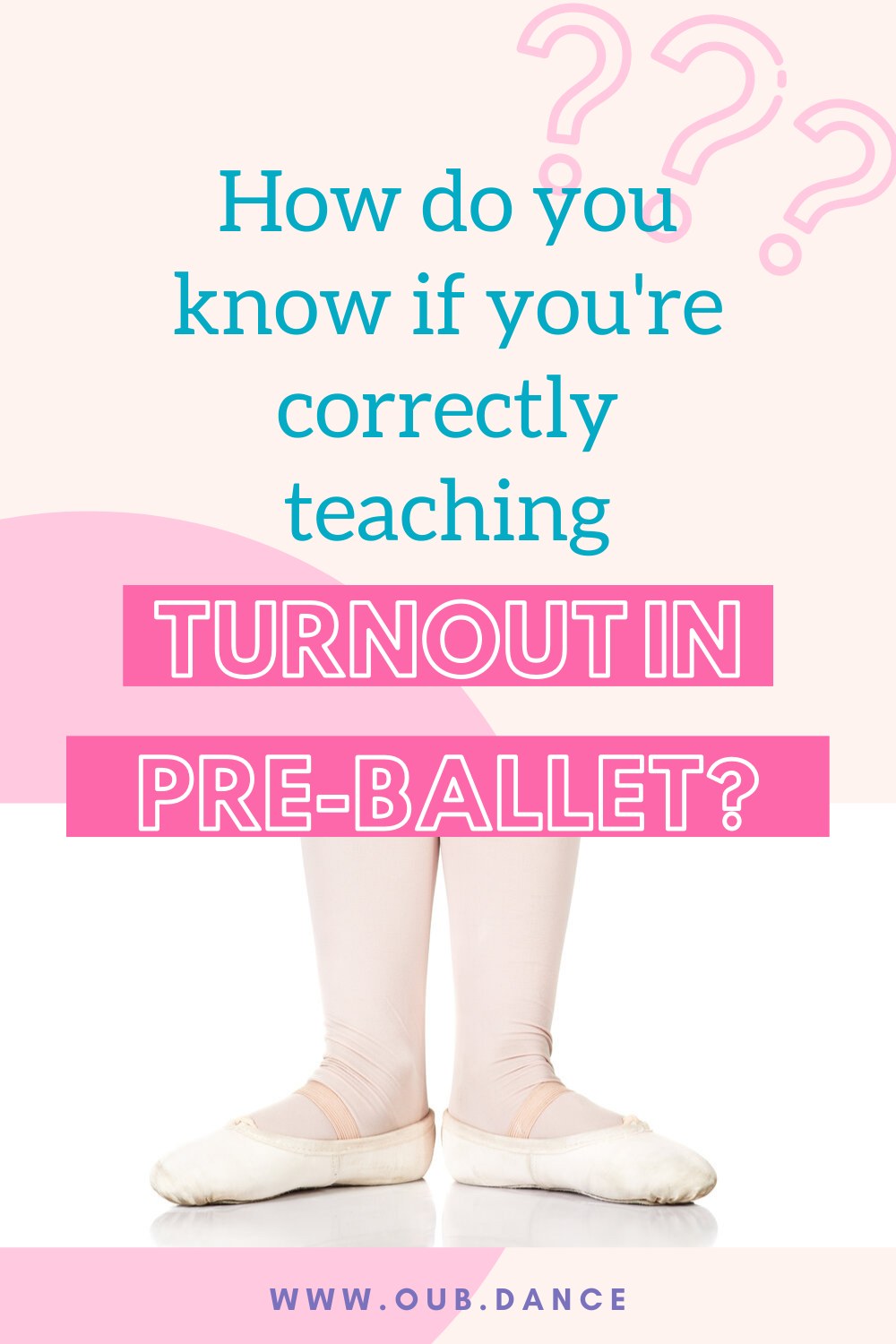How do You Know if You’re Correctly Teaching Turnout in Pre-Ballet?
Teaching Turnout in Pre-Ballet
When it comes to teaching turnout to young children in ballet, there are many schools of thought on when to introduce turnout, how much turnout a student should be able to maintain while dancing, and when to introduce what positions. In our Once Upon A Ballet™ Curriculum, we are very specific in what we recommend in terms of when to introduce turnout, specific positions, and what degrees of turnout. We do not believe in forcing turnout at any age, but do believe in having students work correctly to obtain their maximum degree of turnout. This will help students gain strength for turnout (as well as other ballet movements) and will help to prevent injury.
Regardless of your thoughts on teaching turnout in ballet, here are some tips you’ll likely find useful when teaching ballet to young children:
When teaching turnout to 2 and 3-year-olds, don’t be afraid to keep them in parallel.
I know—that sounds counterintuitive. Sure, you can teach them basic, turned-out positions like 1st and 2nd, but when it comes to actual dance movements, we recommend keeping students in parallel. Teach this age group very basic ballet steps like pliés and tendus, but do so in parallel. Why? Think about when a 3-year-old does a plié. If they are even following along and doing a plié at all, what is their posture like? Most likely (without any practice), they’ve stuck their bum out, their back is swayed, and if their hands are on their hips their elbows are pointing backward instead of to the sides. So instead of having your 3-year-olds try standing in 1st position to plié, focus on things they can work on now that will help them more later on. Focus on their posture. Focus on whether or not they are standing and working in parallel correctly.
Did you know there’s a “correct” way to stand in parallel to better develop turnout later on?
For very young children, working in parallel doesn’t mean they aren’t working on turnout. Be sure their legs are together--especially their ankles and knees. This will help to strengthen the inner leg muscles, developing the strength needed later on when turnout is introduced.
It’s okay to introduce turnout in very small degrees. This applies mostly to pre-ballet students. Most students in beginning ballet (we’re assuming 7 or 8 years old) should be able to hold turnout correctly at a 90-degree angle or more (as in, their feet form a 90-degree angle when standing in 1st position). But for 4-year-olds, and even some 5 and 6-year-olds, standing in a 1st position so that their feet make just a 45-degree angle with correct turnout and posture can be a challenge. It’s okay to introduce turned-out positions and movements with only slight turnout while students are developing the strength and flexibility to turn out correctly, as well as the coordination to do certain movements while turned out.
Do you teach students 3rd position or a more relaxed, open 5th position first?
In our Once Upon A Ballet™ Curriculum, we have students begin working in a completely crossed 5th position (where the heel of the front foot completely crosses over the toes of the back foot) in their second year of pre-ballet (ages 5 to 7). Before you say, “What!?” remember what their degree of turnout likely is. Their 5th positions at this age are likely not going to be very pretty. But if they learn to use a completely crossed 5th position early on, they can focus on increasing their degree of turnout as they advance. At Once Upon A Ballet, we are all about progressions when it comes to teaching ballet technique. However, we’ve found it’s easier to start good habits like crossing 5th positions, tendus, arabesques, etc. in the beginning better than later on.
Happy Dancing!
Ashley Hartford
Founder + Owner, Once Upon a Ballet
Want to know more about me?
Get a FREE Dance Activity Pack
Freshen up your toddler and preschool dance classes with this set of fun and imaginative dance activities!
What We’re All About
At Once Upon a Ballet, we want to help you teach dance in a way that sparks your students’ imaginations, keeps their attention, and has them leaving class excited for what’s next.
DANCE CURRICULUMS
Our complete curriculums for toddler and preschool dance and children’s ballet give you a full year of lesson plans for each age group. Our lesson plans are rooted in child development and teach dance through imagination and play. We strongly emphasize correct, age-appropriate ballet techniques for young children, as well as building self-esteem, creativity, problem-solving, and classroom skills.
CERTIFIED TEACHERS
If you teach toddler or preschool dance, our teacher certification course gives you the tools to better connect with your littlest students, keep their attention, and have better classroom behavior.
LICENSED STUDIOS
For our licensed studios, we provide branding and marketing support to help them grow their classes that use our curriculums.

